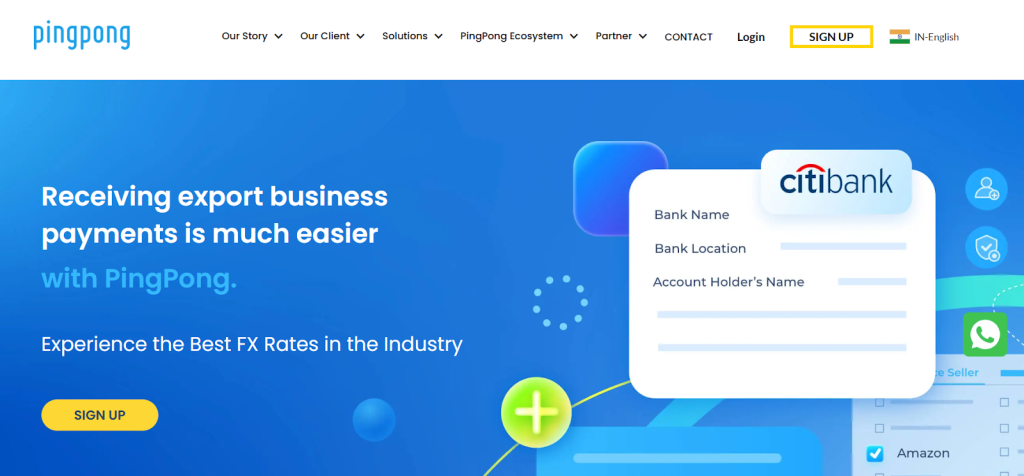In today’s globalized business landscape, cross-border transactions have become an essential part of growth for freelancers, exporters, and digital businesses. Two of the most prominent platforms helping companies simplify international payments are Payoneer and Pingpong. While both platforms offer efficient global payment services, there are key differences in pricing, user experience, and business focus that set them apart.
If you’re running a business in India and looking for a reliable B2B payment system, understanding these differences can help you make a smarter financial decision.
1. Overview of the Platforms
Payoneer was founded in 2005 and is widely recognized for facilitating payments between global marketplaces, freelancers, and businesses. It’s available in over 200 countries and supports multiple currencies, making it a go-to for international transactions.
Pingpong, on the other hand, is a newer yet rapidly growing payment solution that’s making waves in the cross-border payment industry. With a strong presence in Asia, especially in India through in.pingpongx.com, the company focuses on providing transparent, cost-effective, and compliant payment services for exporters, e-commerce sellers, and remote professionals.
2. Key Differences Between Payoneer and Pingpong
While both Payoneer and Pingpong are designed to simplify international payments, their focus and approach differ significantly. Pingpong primarily caters to global B2B payments and eCommerce exporters, offering transparent pricing and low transaction fees with no hidden charges. In contrast, Payoneer mainly serves freelancers and marketplace users, and its fee structure can vary depending on the region and transaction type — often including additional conversion or withdrawal fees.
When it comes to transfer speed, Pingpong typically provides faster settlements, particularly for Indian exporters, ensuring that businesses receive their payments more quickly and efficiently. Both platforms support multiple currencies such as USD, EUR, and GBP, but Pingpong’s system is designed to optimize conversions for better FX rates.
In terms of compliance and security, Pingpong is fully regulated and RBI-compliant in India, ensuring that every transaction meets local financial standards. Payoneer, meanwhile, operates under global regulations as a FinCEN-registered company. Additionally, Pingpong’s customer support is tailored for Indian businesses, providing localized and responsive assistance, whereas Payoneer offers global support, which can sometimes result in slower response times.
Both platforms integrate with major online marketplaces, but the focus differs: Pingpong supports platforms like Amazon, Shopee, Wish, and Alibaba, while Payoneer is widely used on freelance and gig platforms such as Fiverr, Upwork, and Airbnb. Overall, Pingpong’s business-centric model and regional adaptability make it particularly attractive for exporters and B2B enterprises in India.

3. Why Pingpong is Gaining Popularity in India
For Indian exporters, freelancers, and digital service providers, Pingpong in India is quickly becoming a preferred choice. The platform allows users to receive international payments directly to their local bank accounts in INR with competitive FX rates and complete transparency.
Pingpong’s focus on B2B payment systems ensures smooth transactions between global clients and Indian suppliers. Unlike some traditional banks or third-party processors, Pingpong offers a digital-first experience with minimal paperwork, faster settlements, and a user-friendly dashboard.
You can learn more or sign up through the official site — in.pingpongx.com — to explore how their system simplifies international business payments.
4. Advantages of Pingpong for Businesses
Cost Efficiency: Lower transaction and conversion fees mean more profit retained.
Faster Transfers: Same-day or next-day settlements for many currencies.
Global Reach: Supports transactions across more than 200 countries.
Regulatory Compliance: Fully compliant with RBI and international financial standards.
User-Focused Interface: Simple account setup, real-time tracking, and multi-currency management.
5. When Payoneer Might Be a Better Fit
While Pingpong offers strong advantages for exporters and B2B transactions, Payoneer may be more suitable for freelancers working on platforms like Fiverr or Upwork. Its integration with major freelance marketplaces remains one of its strongest benefits.
However, for businesses that prioritize direct B2B payments and want better exchange rates, Pingpong stands out as a more cost-effective and India-centric solution.
Conclusion
Both Payoneer and Pingpong are powerful tools for managing international transactions. However, Pingpong’s tailored services for Indian businesses, transparent fee structure, and focus on seamless B2B payments make it a strong contender in the global payments industry.
If your goal is to streamline global payouts and maximize profitability, explore Pingpong in India — a trusted B2B payment system built for modern businesses.

